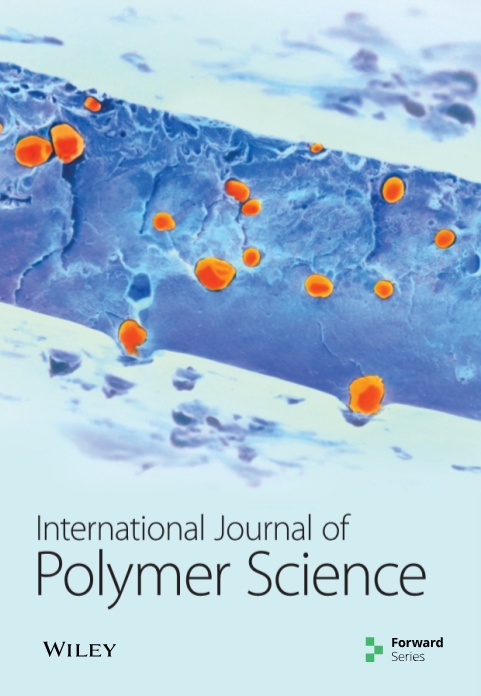Physico-Mechanical Characterization of Plastic (Polyester) Reinforce With Palm Kernel Shell
IF 4.4
4区 化学
Q2 POLYMER SCIENCE
引用次数: 1
Abstract
The main objective of this research paper is to contribute to the characterization of a composite material with a polymer matrix reinforced with a palm kernel shell fiber for its application in the naval or aeronautic industry. To achieve this objective, it first opted for the fabrication of this composite by molding with different grain sizes (0.5 mm and 1.25 mm) and at different percentages of sand and PVC with the following proportions: (10%, 20%, 30%, and 40%), then subjected the sample pieces to physical and mechanical testing such as (three-point bendings, resilience and compression tests). The physical characterization allows us to obtain an experimental volumetric mass for the 0.5 mm sample varying between 1.72 and 1.59 kg/m3 and for the sample 1.25 mm, varying between 1.66 and 1.61 kg/m3 that is the more the percentage of palm kernel powder increases, the lighter our material becomes. The mechanical characterization shows a Young’s modulus in bending varying between 3199.06 and 3236.16 MPa for the 0.5 mm and from 31,881.87 to 3244.03MPa for 1.25 mm that is the palm kernel powder and grain size make the material more rigid, normal stress due to compression varying between 32.05 and 56.41 MPa for 0.5 mm and from 44.8246 to 62.028 MPa for 1.25 mm. A resilience test varies between 0.61 and 2.00 J/cm2 for 0.5 mm and from 0.94 to 2.39 J/cm2 for 1.25 mm that is the more the percentage of palm kernel shell and particle size, the more the material becomes more resilient.棕榈仁壳增强塑料(聚酯)的物理力学性能
本研究论文的主要目的是有助于表征棕榈核壳纤维增强聚合物基体复合材料在海军或航空工业中的应用。为了实现这一目标,它首先选择了通过不同晶粒尺寸(0.5 mm和1.25 mm)和不同百分比的沙子和PVC,比例如下:(10%、20%、30%和40%),然后对试样进行物理和机械测试,如(三点弯曲、回弹和压缩测试)。物理特性使我们能够获得0.5 mm样品,在1.72和1.59之间变化 kg/m3,样品为1.25 mm,在1.66和1.61之间变化 kg/m3,即棕榈仁粉末的百分比增加得越多,我们的材料就越轻。力学特性显示弯曲时的杨氏模量在3199.06和3236.16之间变化 0.5的MPa mm,从31881.87到3244.03MPa为1.25 mm,即棕榈仁粉末和颗粒尺寸使材料更加坚硬,压缩产生的法向应力在32.05和56.41之间变化 MPa,适用于0.5 mm,从44.8246到62.028 1.25时的MPa mm。弹性测试在0.61和2.00之间变化 J/cm2,适用于0.5 mm和0.94至2.39 J/cm2,适用于1.25 mm,即棕榈仁壳的百分比和颗粒尺寸越大,材料就越有弹性。
本文章由计算机程序翻译,如有差异,请以英文原文为准。
求助全文
约1分钟内获得全文
求助全文
来源期刊

International Journal of Polymer Science
POLYMER SCIENCE-
CiteScore
6.10
自引率
0.00%
发文量
55
审稿时长
>12 weeks
期刊介绍:
The International Journal of Polymer Science is a peer-reviewed, Open Access journal that publishes original research articles as well as review articles on the chemistry and physics of macromolecules.
 求助内容:
求助内容: 应助结果提醒方式:
应助结果提醒方式:


